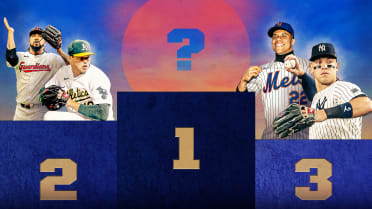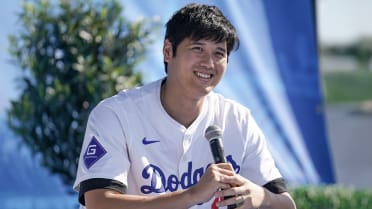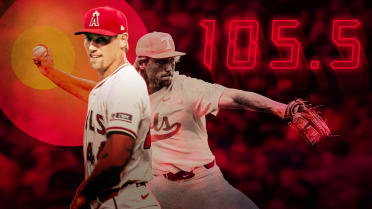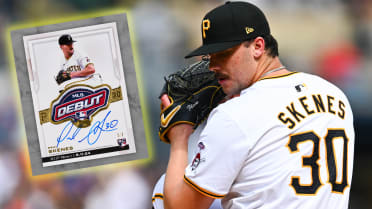Rays release renderings of proposed new ballpark in St. Petersburg
ST. PETERSBURG -- The Rays on Thursday released their first detailed renderings and shared more specific details about their proposed new stadium, which team president Matt Silverman said they plan to make “the most intimate ballpark in baseball.”
Last September, the Rays reached an agreement with the city of St. Petersburg and Pinellas County to build a new $1.3 billion ballpark on the Tropicana Field site as part of the long-term redevelopment of the Historic Gas Plant District. The St. Petersburg City Council and Pinellas County Commissioners are expected to vote on the ballpark and development agreements in July. If approved, the Rays plan to begin construction in January 2025 to have it ready for Opening Day 2028.
The ballpark would include roughly 30,000 fixed seats, with the capacity for Rays games reaching around 33,000-34,000 when accounting for standing room and other gathering spaces. Tropicana Field’s current capacity with the upper deck closed is 25,025, but otherwise, the lowest capacity for a big league ballpark is 34,830 at Progressive Field in Cleveland.
The Rays believe that is one way they can create an environment that brings fans near the action on the field. Of the 30,000 seats in the three-tier ballpark -- main concourse, club level and upper deck -- they say approximately 70 percent would be below the top level, with roughly 15,000 in the lower bowl.
The new stadium would have fewer suites than their current home ballpark but would offer what the club called “a variety of comfortable seating types, from premium clubs and suites to flexible viewing areas, decks and social gathering spaces.”
The field itself would have artificial turf, like The Trop. Some aspects of the design have not yet been finalized, including the height and shape of the outfield fences, but the plan is to have both bullpens beyond the outfield wall and video boards in the outfield corners, with both teams’ clubhouse and workout spaces underneath the stands with easy access to the field.
Silverman also said the Rays’ new ballpark would have the smallest foul territory in baseball, along with the shortest distance from home plate to the backstop. That part of the design should bring everyone, including fans in the upper-deck seats (which would be around the infield, split into two sections) closer to the field.
“The coolest part is how close the fans will be to the field and how close a connection they’ll feel to the game that’s being played on the field,” Silverman said. “In the past, ballparks were designed before [protective] nets were required, so there was a distance that you needed from the field for safety. And when you have a larger capacity, it makes it much more difficult to put the seats close to the field because the geometry doesn’t work.
“Knowing where we are today, we’re able to minimize foul territory and bring all of the seats much closer to the field of play, creating an energy and intimacy that doesn’t exist in baseball. … This will be, we think, the most intimate ballpark in baseball.”
Additionally, the field will be visible from all concourses, with full 360-degree circulation around the ballpark. The Rays haven’t finalized many details, but Silverman said there will be “water features,” including either the popular Rays Touch Tank or “a successor to the ray tank.”
The tiered, pavilion-style roof also plays into the feeling of intimacy. Whereas Tropicana Field’s dome looms high over everyone in the ballpark, the new stadium would have a high roof over the field and a lower roof over the seats. The Rays have used Statcast data to ensure the roof would be high enough to not impact fly balls, as the catwalks at The Trop occasionally do.
“We’re creating this intimacy in part because we don’t need to have 40,000 seats,” Silverman said. “We’re using the size of the ballpark to our advantage to create a much more intimate environment for all of our fans.”
At the same time, the Rays want their new ballpark to seamlessly flow in and out of the rest of the mixed-use district -- which would eventually include restaurants, bars, entertainment venues, housing and a hotel, plus office and retail space -- as well as the surrounding areas of downtown St. Petersburg.
That’s why another aim of the design, according to Populous design principal Byron Chambers, is making it feel like “the inside’s outside and the outside’s inside,” even in a fixed-roof stadium.
The Rays believe they can achieve that feeling in several ways. For one, large windows that wrap around the ballpark would let in sunlight and let fans see outside. (Since batters will face north and pitchers south, the Rays don’t believe sunlight or glare would be an issue during games.) Some of the street-level panels will be operable, allowing them to remain open during cooler months.
Also, while there would be several gates around the ballpark, the main entrance will be through left field. Given the topography of the site, fans could enter through that gate onto the main concourse and walk down to their lower-level seats. The plan is for Second Avenue South to be the primary pregame/postgame destination, with shops and restaurants on either side of the street leading to the plaza and entertainment district.
The Rays and Populous also took a cue from the former Gas Plant neighborhood, where front porches were a social gathering area, by incorporating a covered “porch” area outside the ballpark. The ballpark’s front porch would open to a main plaza, which the Rays hope to make a community gathering space within the Historic Gas Plant District whether they’re playing or not.
To that end, the Rays plan to make the new ballpark a “365-day venue” and keep parts of the stadium, the team store and restaurants/bars open year-round, not just during baseball season. They intend to host a variety of other events for audiences ranging up to 50,000 people, including concerts, festivals, conferences, graduations and other sporting events throughout the year.
“For me, it’s the outfield experience … and how all that is really close and really unique and is able to be active on gamedays and non-gamedays,” Populous lead designer Zach Allee said. “I think it has the ability to really feel like St. Pete and Tampa Bay and become part of the everyday community.”
Senior Reporter Adam Berry covers the Rays for MLB.com and covered the Pirates from 2015-21.




